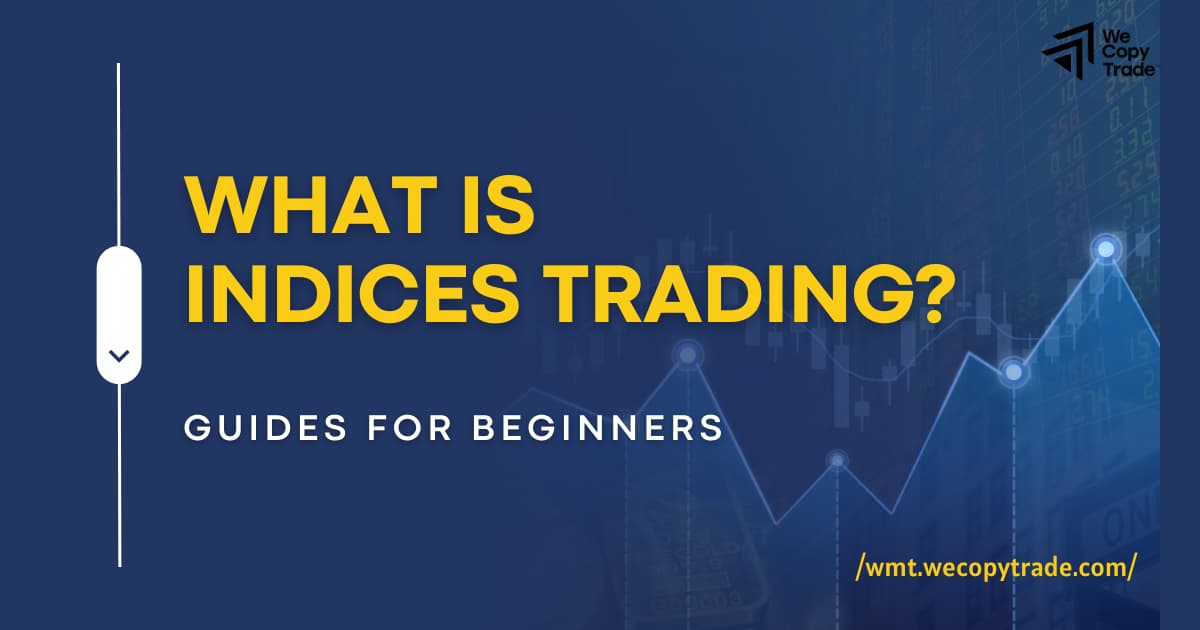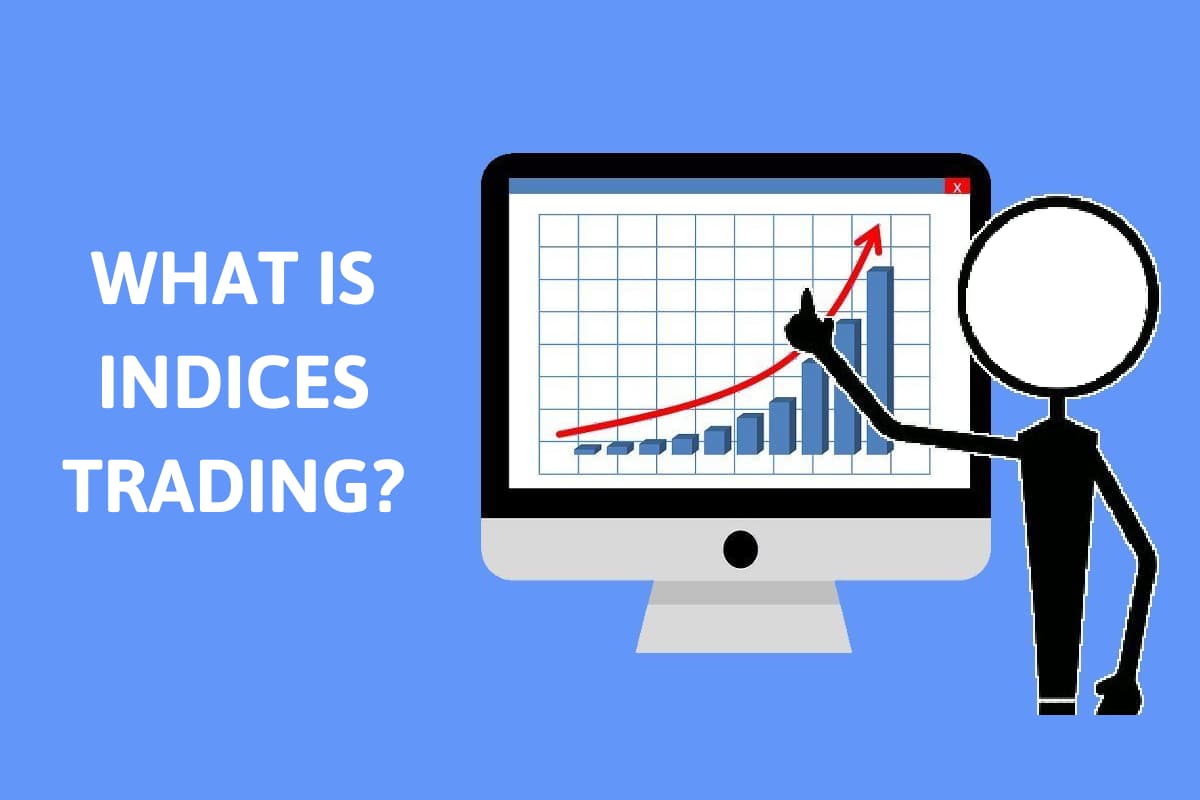
Indices trading, also known as stock index trading, may be a good place to start getting involved in the financial markets without investing in individual companies. It allows you to buy and sell stock market indices, which are groups of companies that work together to represent an entire market. So what is indices trading? What are the steps to start trading indices? This guide will go over everything beginners need to know about indices trading before starting their investing journey.
What is Indices Trading?
First, what are indices? A stock market index is a group of stocks that reflect a subset of the market. These indices monitor the performance of a set of stockes to provide an overview of how that segment of the market is performing. Indices are built based on criteria such as market capitalization, sector, or region, and they help investors understand overall market trends.
Some of the most traded indices include:
- Dow Jones Industrial Average (DJIA): tracks the 30 largest US companies. It includes big names like Apple, Disney, etc.
- NASDAQ 100: tracks the 100 largest non-financial stocks trading on the NASDAQ exchange.
- S&P 500 (US 500): measures the value of 500 large cap US companies.
- DAX (Germany 40): follows the 40 largest and most important companies on the Frankfurt Stock Exchange.
- FTSE 100: measures how the 100 most valuable public companies on the London Stock Exchange are performing each day.
So what is indices trading? Indices trading is the act of purchasing and selling a specific index on the stock market. When you trade an index, you are essentially betting on whether the overall value of groups of stocks included in that index will rise or fall. Your profits depend on the performance of the market segment as a whole.

How Does Indices Trading Work?
Indices trading involves speculating on whether the overall value of a stock market index will increase or decrease. Rather than buying shares of each individual company, you buy and sell financial assets that track these indices’ value.
Ways to trade indices:
- Exchange-traded Funds (ETFs): can be bought and sold just like regular stocks.
- Futures contracts: A futures contract lets you buy or sell an index at a predetermined price at a later date.
- Contracts for Difference (CFDs): CFDs give traders a way to earn from an index’s price movements without owing the stocks.
With ETFs, futures, or CFDs, traders can place bets on whether the market section an index represents will rise or fall in value over time. It is an alternative to picking individual company stocks.
Benefits and Risks of Indices Trading
Like any form of trading, indices trading also comes with its own set of benefits and risks. Here are the pros and cons of trading stock market indices:
Benefits
- Diversification: Traders can get exposure to different stocks with one investment, reducing the impact of any one stock going up or down.
- Lower costs: Index funds and ETFs that track indices tend to have lower fees than investing in individual stocks or actively managed funds.
- Flexibility: You can choose indices in various market segments, sizes, sectors, or geographic regions to suit your goals and risk tolerance.
- Simplicity: It is a simple way for beginners and experts to participate in the overall stock market performance.
- Potential returns: With the right strategy, indices can gain value whether the overall market rises or falls.

Risks
- Market volatility: The overall stock market and indices can rise and fall sharply in value due to changing economic reports, world events, or other factors. This means an index could lose value fast.
- Economic and political factors: Things like employment rates, inflation rates, election results, or policy events can impact indices’ value. These types of events may create uncertainty.
- Potential for losses: Just like any investing, there is always a risk of losing money. It is important to have strategies to help manage risks and limit potential losses if the market declines.
Steps to Start Trading Indices
Here are the simple steps to get started with trading indices:
Choose an index to track
The first step to trade indices is selecting the right index for your preferences. Popular options include the S&P 500 for large US companies or the MSCI World which include international stocks. It is best to research the different indices to understand what types of businesses are included. This will help you choose one that matches your financial goals and risk tolerance.
After that, find a fund or ETF. Search for a passively managed fund or ETF that aims to replicate the performance of the index you selected.
Open a brokerage account
After opting for an index, you need to open an account with an online broker. You can look for a prestigious full-service broker that allows index trading and has good research tools. You should check various brokers to find the best one with useful features and low trading fees. Try out indices trading with WeMasterTrade.
Deposit funds
Once your brokerage account is created, you will need to deposit funds so you have money available to use for trades. Most brokers allow deposits through bank transfers, wire transfers, checks or linked bank accounts. Only commit funds you can afford to potentially lose as part of your indexing strategy.

Place a trade
Now you can make an initial index trade. Locate the market index you wish to trade using your broker’s platform. Then enter the details of your trade, such as how many units you want to purchase and what type of order. Executing your first index trade completes the essential steps for beginning your new investment approach. Further refinement comes with ongoing experience.
Set your strategy
Before putting more trades in motion, develop your overall plan. Consider the types of indices you focus on and your outlook, like whether you want short-term plays or long-term holds. Define things like how much to risk per trade and your approach to taking profits. Having a clearly defined strategy provides valuable guidance as you navigate index moves in the market.
Track your returns
Monitoring your results is an important step. Keep a record of each trade’s profit or loss so you understand how your strategy is performing over time. Pay attention to your overall return compared to simply investing in an index fund. Seeing what’s working and what’s not will help refine your approach.
Tips for Beginners
Following these useful tips will help you trade indices effectively:
- Start with a demo account: Practice trading indices using a simulated trading account first. This will help you learn without risking your real capital.

- Stay informed: Keep up with business news, economic reports, and how indexes are moving. Follow sources that can help you spot trends and opportunities for your strategies.
- Set clear goals: Define what you hope to achieve through index trading and make a plan to meet your targets. Goals keep you focused on your reasons for investing.
- Be patient and keep learning: Trading requires skills developed over time. Stick with your plan, learn from your experiences, and continuously improve your knowledge and techniques.
Common Mistakes to Avoid
When starting to trade indices, beginners may make certain mistakes, including:
- Overtrading: Do not trade too often or urgently try to make up for losses. Stick to your strategy without impulsive moves.
- Ignoring market news: It is essential to keep up with economic reports and political happenings that could shift indices up or down. Missing major updates can lead to unexpected losses.
- Not having a risk management plan: Make sure to have to way to limit your potential losses through stop-loss orders or only investing spare funds you could afford to lose.
Final Words
In conclusion, indices trading can offer beginners an accessible way to take part in the stock market. By understanding what indices are and how they work, new traders now have a basic introduction to the overall concept of indices trading. With a clear overview of important factors like popular indices, trading methods and associated risks, newcomers are equipped to take initial steps in their education.
For more useful trading tips, please visit us at https://wmt.wecopytrade.com/blog.





